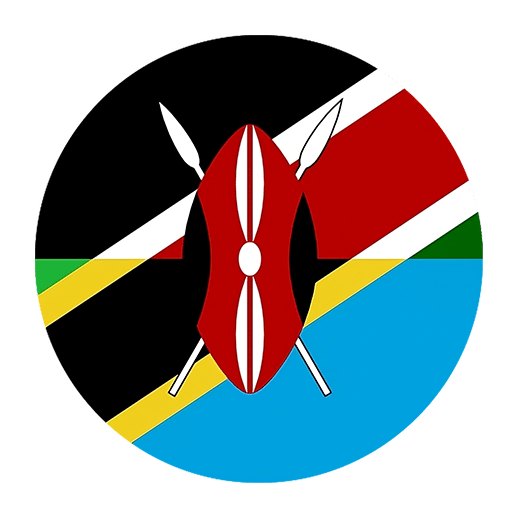In the rich tapestry of linguistic diversity found in East Africa, Swahili stands out as a dominant and influential language. With its origins as a trade language along the East African coast, Swahili has grown over centuries to become the lingua franca of the region. It has profoundly influenced many local languages, shaping their development and intertwining with their history. This article explores the various ways in which Swahili has left its mark on other East African languages, highlighting its role in cultural integration, vocabulary expansion, and linguistic structure.
Historical Background of Swahili
Swahili, or Kiswahili as it is known in the region, is a Bantu language with a rich history. Its origins trace back to the coastal regions of Kenya, Tanzania, and Mozambique, where it began as a trade language among diverse communities, including Arab traders, Persian merchants, and local Bantu-speaking populations. The interaction between these groups led to a linguistic blend that incorporated elements from Arabic, Persian, Portuguese, and later, English and German.
The spread of Islam in the region further cemented Swahili’s role as a unifying language. Swahili became the medium for religious instruction and Islamic scholarship, significantly increasing its prestige and reach. By the 19th and early 20th centuries, European colonization further propelled Swahili’s status, as it was adopted as an administrative language by both German and British colonial administrations.
The Role of Swahili as a Lingua Franca
One of the primary ways Swahili has influenced other East African languages is through its role as a lingua franca. As a common language used for communication between speakers of different native languages, Swahili has facilitated trade, social interaction, and political discourse across East Africa. This widespread use has led to the incorporation of Swahili vocabulary and grammatical structures into many local languages.
Vocabulary Borrowing
The most evident influence of Swahili on other East African languages is the extensive borrowing of vocabulary. Words related to trade, administration, religion, and daily life have been adopted by numerous languages in the region. For instance, in Luganda (spoken in Uganda), words such as “safari” (journey), “shule” (school), and “chakula” (food) are borrowed directly from Swahili. Similarly, in Kikuyu (spoken in Kenya), words like “nguo” (clothes) and “rafiki” (friend) have Swahili origins.
This borrowing is not limited to nouns; verbs and adjectives have also been incorporated. For example, the verb “kufanya” (to do) in Swahili has found its way into several other Bantu languages, often adapted to fit the phonological and morphological rules of the borrowing language. This process of lexical borrowing enriches the vocabulary of the recipient language, providing new terms for concepts and objects introduced through Swahili.
Grammatical Influence
In addition to vocabulary, Swahili has influenced the grammatical structures of other East African languages. This influence is particularly noticeable in syntax and morphology. For instance, the use of prefixes and infixes in verb conjugation, which is a characteristic feature of Swahili, can be seen in other Bantu languages in the region. The noun class system, which categorizes nouns based on semantic and grammatical features, is another aspect where Swahili’s influence is evident.
Moreover, Swahili’s use of prepositions and conjunctions has been adopted by several languages. This has led to a more uniform way of constructing sentences and expressing relationships between different elements of a sentence. For example, the Swahili preposition “kwa” (for, to) is used in languages like Chichewa and Shona, illustrating how Swahili’s grammatical constructs have permeated other languages.
Cultural Integration and Identity
Language is not just a means of communication; it is also a carrier of culture and identity. Swahili’s influence on other East African languages extends to the cultural domain, where it has played a significant role in shaping the identity of communities. The use of Swahili in music, literature, and media has created a shared cultural space where different ethnic groups can connect and express themselves.
Music and Oral Tradition
Swahili has a rich tradition of music and oral literature, which has been instrumental in its spread and influence. Genres such as Taarab and Bongo Flava have popularized Swahili lyrics across East Africa, leading to their adoption by non-Swahili speakers. This musical influence has facilitated the blending of Swahili with local languages, creating hybrid forms that reflect the region’s diverse cultural heritage.
Oral traditions, including storytelling, proverbs, and poetry, have also contributed to Swahili’s cultural influence. Swahili proverbs and idiomatic expressions are frequently used in other languages, enriching their expressive capacity and providing a shared repository of wisdom and cultural norms.
Media and Education
The role of Swahili in media and education cannot be overstated. Radio and television broadcasts in Swahili reach millions of listeners and viewers across East Africa, making it a vital medium for disseminating information and entertainment. This widespread exposure has contributed to the passive acquisition of Swahili by speakers of other languages, who often incorporate Swahili phrases and expressions into their speech.
In the educational sector, Swahili is taught as a subject and used as a medium of instruction in many schools. This formal exposure to the language has facilitated its integration into the linguistic repertoire of students, who may speak different native languages at home. As a result, Swahili serves as a bridge language that enhances mutual understanding and fosters a sense of regional identity.
Challenges and Opportunities
While the influence of Swahili on other East African languages has brought many benefits, it also presents certain challenges. The dominance of Swahili can sometimes lead to the marginalization of smaller languages, which may struggle to maintain their vitality and relevance. Language shift, where speakers abandon their native language in favor of Swahili, is a concern for linguists and cultural preservationists.
However, this linguistic dynamic also presents opportunities for language revitalization and preservation. By documenting and studying the ways in which Swahili interacts with other languages, linguists can develop strategies to support bilingualism and multilingualism. Efforts to promote the use of native languages alongside Swahili can help preserve linguistic diversity while ensuring that communities can participate fully in the broader social and economic life of the region.
Conclusion
The influence of Swahili on other East African languages is a testament to its historical significance and contemporary relevance. As a lingua franca, Swahili has facilitated communication, trade, and cultural exchange, leaving an indelible mark on the region’s linguistic landscape. Through vocabulary borrowing, grammatical influence, and cultural integration, Swahili has enriched the languages and identities of East Africa’s diverse communities.
While challenges remain, the continued study and promotion of Swahili and other local languages can help preserve the region’s linguistic heritage. By embracing the opportunities for bilingualism and multilingualism, East African societies can celebrate their linguistic diversity and ensure that future generations inherit a rich and vibrant cultural legacy.

